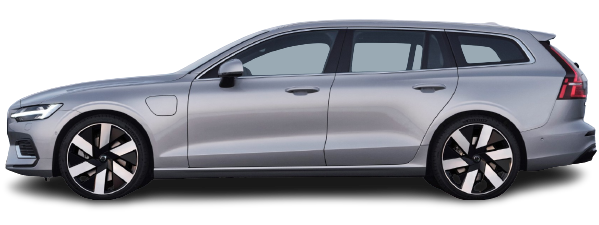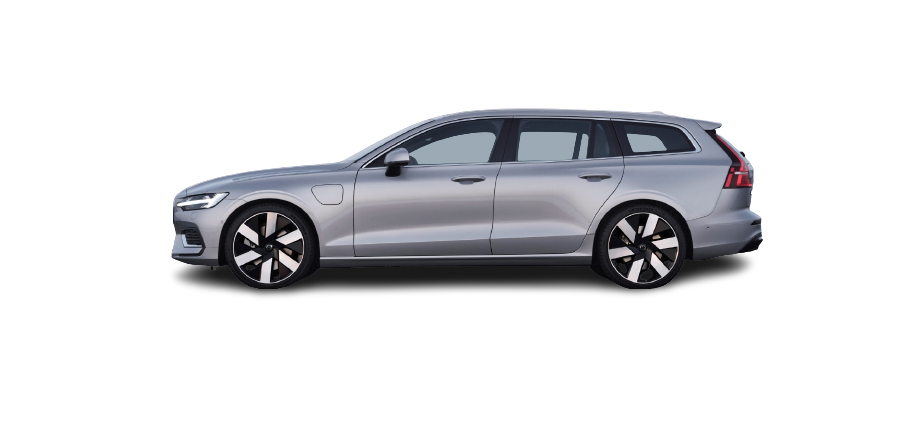
Google Maps
![]()
It is possible to use Maps when the car is connected to the Internet and when it is not, but more services are available when you are connected to the Internet.
Linking your Google account to the active user profile also personalises the services for you to a greater extent. Destinations set on other devices are shown, such as home, work, favourites and last searches. If anything is changed on a device it is also changed in Maps, provided that the device and the car are logged in to the same Google account.
Maps can also be controlled with voice control using the Google assistant.
The instructions above are general descriptions and include third-party suppliers. Availability, procedure and functionality are subject to change or variation.
Observe the following.
- Direct all your attention to the road and make sure that all your concentration is on driving.
- Follow applicable traffic legislation and drive with good judgment.
- Due to weather conditions or time of year affecting the road conditions, some recommendations may be less reliable.
Using Google Maps
Opening and closing Maps
![]()
- To open Maps, tap on its icon in the centre display. To close the app, tap on the home button.
- The open mode shows the map and current traffic information.
The navigation tile has shortcuts, each of which initiates a search in Maps: Examples of shortcuts:
- Petrol station
- Restaurant
When a route has been entered in Maps, there is an extra shortcut to terminate the ongoing guidance.
The instructions above are general descriptions and include third-party suppliers. Availability, procedure and functionality are subject to change or variation.
Observe the following.
- Direct all your attention to the road and make sure that all your concentration is on driving.
- Follow applicable traffic legislation and drive with good judgment.
- Due to weather conditions or time of year affecting the road conditions, some recommendations may be less reliable.
Updating Google Maps
- It is advisable to ensure that Maps is updated to the latest version.
- When an updated version of Maps is available, this will be found on Google Play. If there are any differences in access rights between two versions of the app, the system will ask the user for approval.
- The latest version ensures that you have the latest updates and functions. To update Maps, your car needs to be connected to the Internet and there needs to be an active Google account linked to the user profile.
- When an update is available for Maps, a notification will be displayed where you can choose to update.
Settings in Google Maps
Set the amount of voice guidance, e.g. if you only want to hear traffic information and not the next manoeuvre.
Set so that road tolls and motorways, for example, are avoided in route directions.
The instructions above are general descriptions and include third-party suppliers. Availability, procedure and functionality are subject to change or variation
Other settings
Language and units
If you want to use other languages or units in Maps, these can be changed from the settings in-app view ![]() . This setting will change the language and units in all displays in the car, not just in Maps.
. This setting will change the language and units in all displays in the car, not just in Maps.
Changing the language in the centre display may mean that some information in the owner’s manual is not compliant with national or local laws and regulations. Do not switch to a language that is difficult to understand as this may make it difficult to find your way back through the screen structure.
Electric car functions with Google Maps
- Some functions in Maps are unique to electric cars. Some of them are listed here, with a brief description.
- The functions mentioned are only examples. For the latest information on which functions are available as well as how they work, go to g.co/mapsincar.
- The functions related to battery level are based on historical use of the car, where influencing factors include, for example, use of electric equipment, speed and driving style.
By default, the map only displays compatible charging stations.
Maps can show the estimated battery level on arrival at a destination.
When charging stations have been added as intermediate destinations in an itinerary, Maps indicates the estimated minimum charging time at the charging station in question in order to clarify the total travelling time and the ETA.
Guidance is started when the car is estimated as not reaching the final destination with the current battery level, Maps will suggest adding charging stations at suitable locations in order to reach the final destination.
The instructions above are general descriptions and include third-party suppliers. Availability, procedure and functionality are subject to change or variation.
Google Maps in the driver display
- The driver display can show guidance to a destination with instructions as well as a map. A map can still be shown if no destination is set.
Depending on selected display mode in the driver display, different amounts of map and guidance information are shown. Examples of information in the driver display:
- Arrows showing the next manoeuvre
- Distance to manoeuvre
- Name of the next road
- Road number and exit number
- Lane information
Guidance points, known as Turn-by-Turn, result in clear guidance via the driver display and minimise the need for the driver to look away from the road.
Destination in Google Maps
- Different destination types can be entered in the search field. Besides addresses, it is possible to enter a specific destination, such as a museum, and ask for directions to the destination. It is also possible to execute more general searches, e.g. for charging stations, restaurants and hotels, and then select one of the search results as a destination and get directions to the destination.
- If a Google account is linked to the car, destinations such as home, work, favourites and last searches that are set on other devices can be shown in Maps.
A poorer connection may have a negative effect on the functions.
Online functions with Google Maps
- The car needs an Internet connection for full Maps functionality. A few functions that are accessible when the car is online are listed here.
- Maps is updated regularly with traffic information and information from car parks, charging stations and the connected Google account.
- The functions mentioned are only examples. For the latest information on which functions are available as well as how they work, go to g.co/mapsincar.
If the traffic is moving slowly, orange or red lines are shown, depending on how slowly the traffic is moving. If the car loses its Internet connection, the coloured lines disappear after a few minutes as the information is no longer up to date. Updated traffic information is displayed again when the connection has been re-established. The map also shows the information on different types of obstacles, such as roadworks or accidents.
- In the event of accidents or other obstacles along the ongoing route, and if another faster route is available, Maps will suggest an alternative route.
When a desired destination has been entered, a route is suggested as well as alternative routes. These suggestions are based on factors such as system settings, traffic information, estimated distance and travelling time. An alternative route is selected from the list of suggested routes, or by steering the car as indicated in the alternative route, which is known as decide by steering.
- Change route while driving, Google Maps redirects you dynamically based on current traffic patterns, so that you can avoid traffic congestion.
The instructions above are general descriptions and include third-party suppliers. Availability, procedure and functionality are subject to change or variation.
Getting directions with Google Maps
- Open Maps in home view or app view
 .
. - Enter an address or location in the search field.
>A route is suggested and marked blue on the map. Alternative routes are indicated in grey. Road selection may be affected if, for example, road tolls and motorways are set to be avoided. - If another road is preferable, tap on the icon for route overview and select an alternative route.
- Start navigation.
>Instructions in the driver display and voice guidance start.
Maps can also be voice-controlled using Google Assistant.
Note
- The instructions above are general descriptions and include third-party suppliers. Availability, procedure and functionality are subject to change or variation.
- Take a look at g.co/mapsincar for more information.
Observe the following.
- Direct all your attention to the road and make sure that all your concentration is on driving.
- Follow applicable traffic legislation and drive with good judgment.
- Due to weather conditions or time of year affecting the road conditions, some recommendations may be less reliable.
Adding intermediate destinations in an existing route
- Select a shortcut.
- Select intermediate destination.
- The route is reconfigured.
When a route has been entered into Maps, the navigation tile shows the following travel information for the next intermediate destination on the journey:
- Travel time
- Distance to an intermediate destination
- Estimated time of arrival, ETA
- The name of the next intermediate destination
- Unique information for electric cars, e.g. estimated battery level at arrival.
It is possible to terminate ongoing guidance directly from the tile.
The information displayed relates to the next intermediate destination. The trip’s final destination is not shown until there are no further intermediate destinations.

